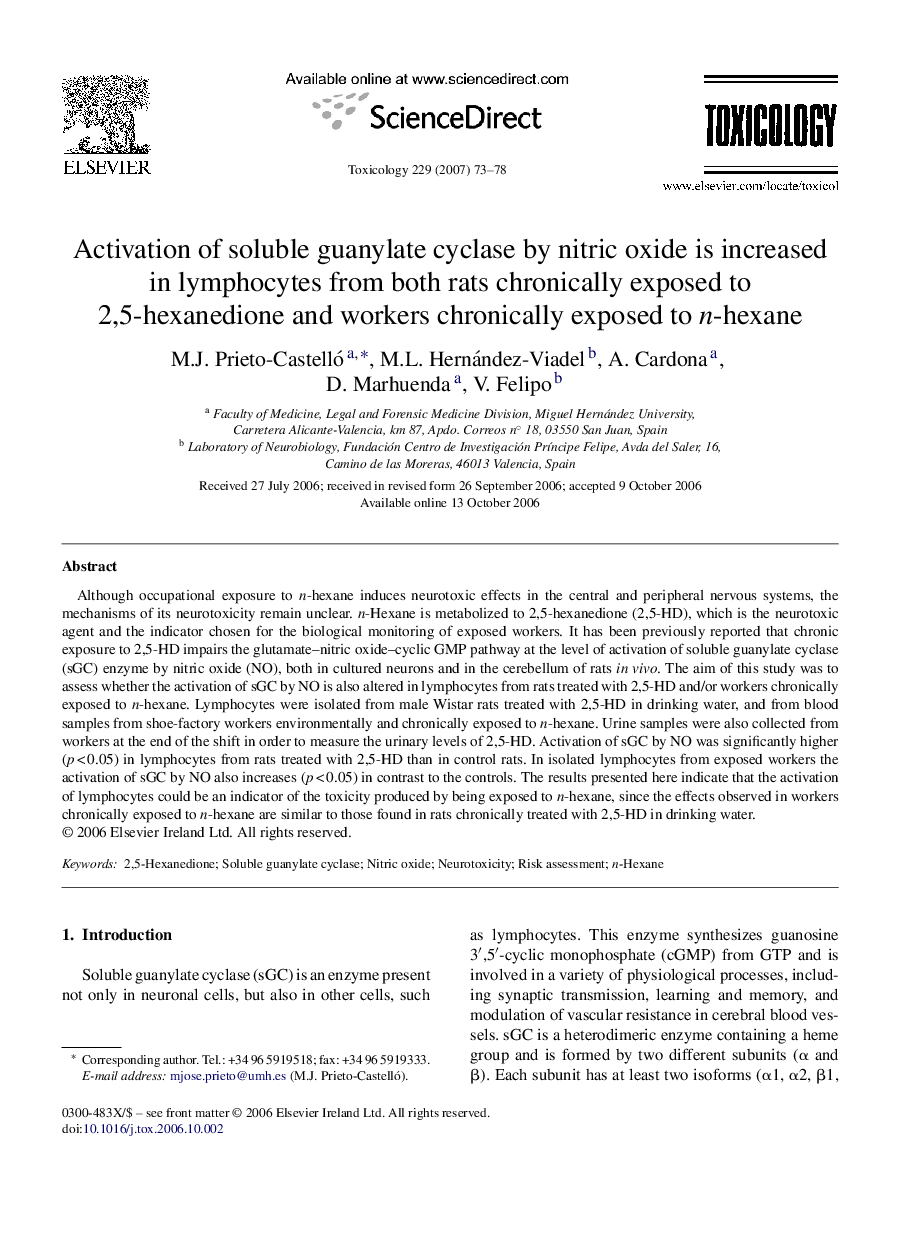| Article ID | Journal | Published Year | Pages | File Type |
|---|---|---|---|---|
| 2597792 | Toxicology | 2007 | 6 Pages |
Although occupational exposure to n-hexane induces neurotoxic effects in the central and peripheral nervous systems, the mechanisms of its neurotoxicity remain unclear. n-Hexane is metabolized to 2,5-hexanedione (2,5-HD), which is the neurotoxic agent and the indicator chosen for the biological monitoring of exposed workers. It has been previously reported that chronic exposure to 2,5-HD impairs the glutamate–nitric oxide–cyclic GMP pathway at the level of activation of soluble guanylate cyclase (sGC) enzyme by nitric oxide (NO), both in cultured neurons and in the cerebellum of rats in vivo. The aim of this study was to assess whether the activation of sGC by NO is also altered in lymphocytes from rats treated with 2,5-HD and/or workers chronically exposed to n-hexane. Lymphocytes were isolated from male Wistar rats treated with 2,5-HD in drinking water, and from blood samples from shoe-factory workers environmentally and chronically exposed to n-hexane. Urine samples were also collected from workers at the end of the shift in order to measure the urinary levels of 2,5-HD. Activation of sGC by NO was significantly higher (p < 0.05) in lymphocytes from rats treated with 2,5-HD than in control rats. In isolated lymphocytes from exposed workers the activation of sGC by NO also increases (p < 0.05) in contrast to the controls. The results presented here indicate that the activation of lymphocytes could be an indicator of the toxicity produced by being exposed to n-hexane, since the effects observed in workers chronically exposed to n-hexane are similar to those found in rats chronically treated with 2,5-HD in drinking water.
